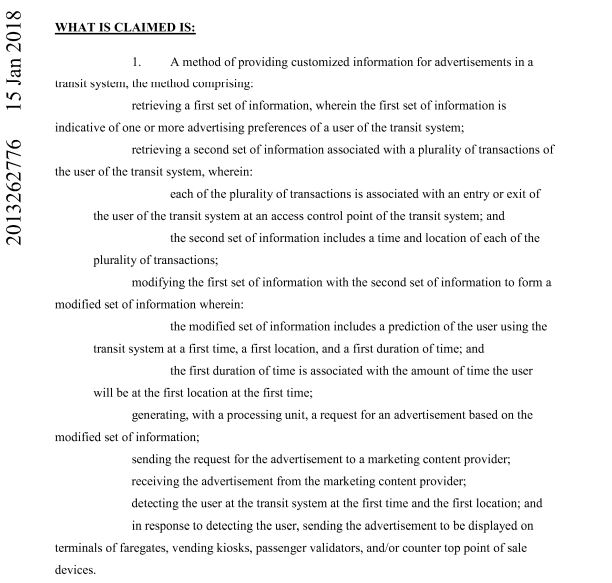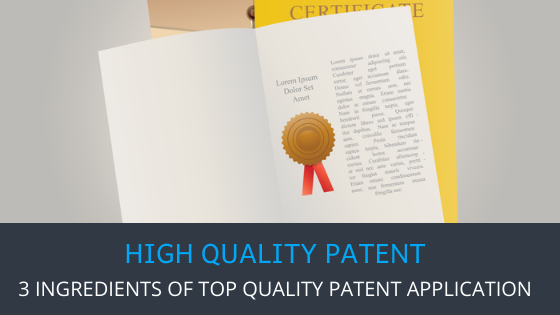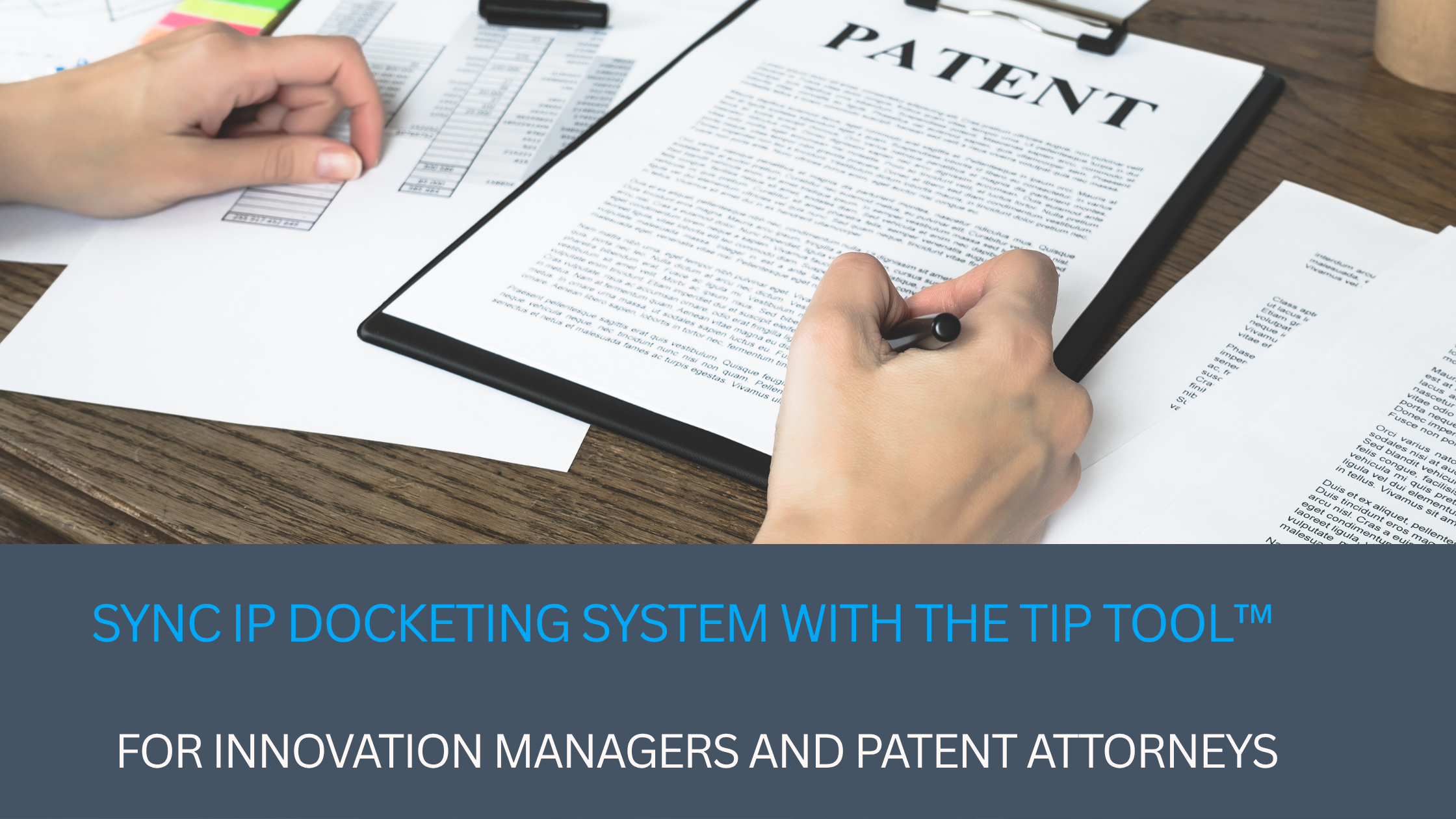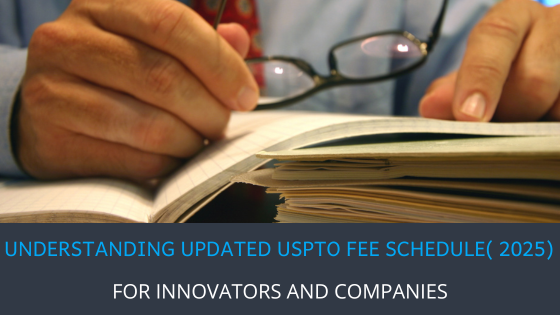Understanding and decoding a patent can feel like reading a foreign language. Patent claims are littered with legalese and hard to parse. A deep dive into strategies for both SMEs and large companies in patenting can elucidate ways to effectively navigate these complexities. We might rely on recommendations or go to an established firm to get a patent drafted. Sometimes, the tendency is also to get it done as inexpensively as possible.
However, when you can’t judge the quality, then you can’t make a sure decision. So, differentiating a good quality patent from a not so good quality patent may seem like a daunting task. But it doesn’t have to be. Here are a few tips and tricks that make this easy.
There are three ingredients of a high-quality patent application you must look for:
1. Substantive coverage
2. Simple language without ambiguity
3. Technical details: Visuals, Citations, and References
Substantive Coverage
Contrary to popular belief, in a patent application, less is not more. A detailed description of the invention along with alternative solutions is essential to ensure broad coverage.
Good patents tend not to be short. A short patent may have 4-5 figures and are very high level. They have very little detail in them. A really good patent would have about 10-15 figures correspondingly with detail that can be added to the claims if needed. Hence, when you get a draft back, check whether it is 3 pages long or 15 pages long. Generally, the more said about the innovation, the more likely you are going to get a better coverage. Description of alternative solutions to the underlying problem will allow claiming those later as your competition tries to design around your roadblocks.
Claims are a very important part of a patent application. It’s quite debatable on what the claims should look like. A long book could be written on the topic and still would not make things easier. As a broad rule a high-quality patent application must have claims directed to how your innovation uniquely solves the underlying problem that originally motivated the invention. Dependent claims can add details as possible fallback positions.
However there are few red flags you can look for while evaluating the claims:
- Claims should be written in such a way that others cannot design around that would create legal gaps.
- Too narrow claims reduce infringement opportunities, but if they are too broad it is unlikely that they would be allowed.
- Technology covered in claims must be relevant 10-15 years down the line as the industry evolves.
Substantive Coverage Example: Techniques In Transit Advertising
Let’s take a look at the claims of this high-quality patent application on “Techniques in Transit Advertising” for example. It has 3 independent and 13 dependent claims with 26 figures.
In summary the patent is for a method to generate a request for an advertisement based on an identified ridership pattern of a user of a transit system:
Let’s take a look at claims.

Let’s take a look at the coverage of this claim:
- The claim talks about retrieving information to find the advertising preference for the rider of the transit system to tailor the experience.
- It also talks about the kind of information that shall be retrieved: entry point, exit point, duration of transit, time and location of plurality of such transactions so that the advertising is location relevant.
- The claim also covers the places for displaying the advertisement like faregates, kiosks, countertops, etc. for the rider.
Going through the complete claims set of this patent, gives a good idea of what claims should look like. The other claims cover a lot of possibilities around the invention like merchant proximity, information that can be displayed other than advertisements, type of media (machine readable) etc. to provide further detail and fallback positions.

The Heart Of The Invention
Once you have a draft patent application, the inventor(s) should read it critically. Has the draft properly detailed the heart of the invention (i.e., the key differentiator that enables your invention). This critical evaluation aligns with key considerations in patentability assessment of ideas, ensuring the invention’s core is thoroughly and creatively described. Is the heart of the invention only mentioned in a cursory manner? Or, is it filled with creative detail and alternatives?
Reading of the draft should surprise the inventor with its thoroughness and detail. This goes to show how much thinking has gone into describing the invention. Remember, the patent application is not a marketing tool. It doesn’t need to be flashy with marketing language. The purpose of a patent application is to get the patent granted. And for that, the application must be detailed and thorough. Failure to disclose the details of the invention amounts to a failure to describe how the inventor was in the possession of the claimed invention.
The patent office requires the inner workings and technical detail on how the heart or the core of the invention works. It should provide the detail to allow another to make and use the invention. The drafter should go in much deeper detail even if the product has not been built.
You should see that detail in the draft.
Think about what the most important technological thing is. For one, it should be captured in the claim. Because it is hard to parse the claims, ask the drafter, where it is mentioned in the claims. Then work your way back and see how much writing is there about that. A good patent application should have at least 2-3 pages of the core of the invention i.e. selling point of the innovation.
Scope of Application
Does the draft speak to what is unique about that invention and define its scope too?
In addition to the uniqueness of the invention, the application must also have a wide scope to enable others to understand how it might be built. Ensure that it covers the existing and future scope of innovation as far out into the future as you might imagine.
Simple Language
High-quality patent specifications are written in unambiguous language to be easily understood. The simple language also ensures that the ideas are not lost in translation.
This means the application must read like something familiar to you or any other similarly trained engineer, developer or scientist. If vague or confusing, it leads to potential attack down the road. If only the claims could be written to avoid the legalese, but the precision of their meaning requires the use of language that the courts have defined in their legal decisions.
Technical Details
A long, thoroughly drafted specification with thorough technical detail must have
- Block Diagrams
- Citations
- References
Block Diagrams
The visual impact of an application is almost as important as the written word. Make sure that the application includes pictographic representations of the invention – block diagrams, mechanical drawings, graphs, screenshots, etc.
Like ample description, the visuals should portray the innovation from different perspectives. For example the block diagram shown below is from a patent on “Techniques in Transit Advertising” (We have used the same patent as a reference throughout the post for easier understanding :)). The patent has 26 figures – a sign of high-quality patent application.

The illustration above is from the patent AU2013262776B2 (Google Patents Database).
Citations
A citation is a reference to prior art that’s relevant to a current patent application.
There are two different types of citations
Backward Citations
Backward citations are patents that are cited by a specific patent and forward citations are patents that cite a specific patent. In other words, these are earlier published documents that are publicly available before the filing date of a new patent application/prior art.
Forward Citations
A good application must find and cite documents that
- may anticipate the claimed invention,
- or might be similar to the claimed invention and limit the scope of the patent protection,
- or which generally reveal the state of the art of the technology.
These are forward citations. The number of forward citations a patent receives is often reflects on a patent’s significance.
The use of citations in a patent application shows the thoroughness of research. These can also act as markers to detail the scope of the invention.
References
A patent includes citations to other patents and literature that the examiner may find relevant to patentability (i.e., prior art). Adding references to the patent application makes it easier for the examiner to evaluate the same and indicates sophistication by the filer and generally indicates searching may have guided the draft.
They also add weight and credibility to the application, thereby increasing the chances of a grant. The examiner will also search for references. All the references will appear on the face of the patent application and more is better.
A good search prior to drafting helps define the novelty in the context of what others have done. Claims should be drafted to broadly cover the innovation, but not step too far into the prior art. Especially where your drafter may be unfamiliar with your technology, a good search can help familiarise them.
Tools To Evaluate Patent Quality
You might consider using a tool to evaluate patent quality. That is not a bad idea, but it has a downside. Let’s see how.
The quality of a patent encompass objective as well as subjective factors.
Objective factors are the ones that can be computed or measured by software. These include
- Length of Specification
- Number of claims
- The number of words in the independent claims
Subjective factors are more traditional like:
- Scope of the application
- A correct and complete description of the heart of the innovation
- How important innovation is to your business?
The tools available in the market can help you judge the quality of a patent defined by objective factors. It’s even possible to manipulate these objective factors. In fact, experienced and expert drafters can remarkably improve the quality of a patent. But for the subjective factors, human feedback is necessary.
In case you want to watch more about filing high-quality patents, I suggest watching below video:
A Quick Recap
With this post we have tried to equip you with the ability to differentiate between a low and a high-quality patent application. To summarize presented below is a 7-points checklist for high-quality patent applications.
- High-quality patent specifications are written in unambiguous language to ensure that the ideas are not lost in translation.
- Claims should be directed to how your innovation uniquely solves the underlying problem that originally motivated the invention. Dependent claims can add details as possible fallback positions.
- A high-quality patent application should have at least 2-3 pages of the core of the invention i.e. selling point of the innovation. Failure to disclose the details of the invention amounts to a failure to describe how the inventor was in the possession of the claimed invention.
- Make sure that the application includes pictographic representations of the invention – block diagrams, mechanical drawings, graphs, screenshots, etc. Like ample description, the visuals should portray the innovation from different perspectives.
- Numerous references in a patent application make it easier for the examiner to evaluate the same and indicate sophistication by the filer. They also add weight and credibility to the application, thereby increasing the chances of a grant.
- A high-quality patent application covers the existing and future scope of innovation as far out into the future as you might imagine.
- The use of citations in a patent application shows the thoroughness of research. These can also act as markers to detail the scope of the invention. In this context, understanding the role of invention disclosures in capturing such essential elements becomes pivotal.
On a side note: Would you want to know how your patent application is progressing at the USPTO compared to other applications in the same domain?
The TIP tool offers statistics of the law firm and the examiner handling your case. Once the application is filed at the USPTO, and an examiner is allotted to your case, the tool indicates the relative performance of the law firm handling your case. The statistics revolve around the number of arguments, grant rate, and grant time. The tool also indicates the case health, for instance, it can tell you if a case needs your attention. There is a whole bunch of insights that you can gather from the TIP tool for strategic patent prosecution.
Request insights for any of your cases at the patent office using the form below.
Conclusion
A well-drafted patent application, as expensive as it may be, is one of your best business investments. To ensure a high-quality patent application, hire the best. Read and re-read, keep editing, and amending and make the application thorough. In exchange for a limited monopoly, description and enablement are the “consideration” that you must provide to the public.
To make the patent application even stronger, ask the following questions:
- Can this patent be adapted to the jurisdictions you would like to take it to in the future? Gain some insights here on the global patent portfolio strategy.
- How easy or difficult does the application make it to detect or prove infringement based on public information?
- Will competitors be able to understand the relevance of the patent?
Let’s keep that discussion for another day!
Wondering if your IP strategy is strong or not and what it takes to design one; read this “How do you develop an IP strategy for your company?”!
Note: The preceding is general business advice and not to be construed as legal advice. IP laws vary by country and retaining licensed legal counsel is advised to confirm this information. Any expressed or implied opinions are of the author and do not necessarily reflect the views of Triangle IP or any other entity who might be associated with the presenter. We hope this content is helpful to you, but should not be relied upon without confirming the advice and accuracy with local legal counsel. Any comments or inquiries are not confidential so please discuss your issues directly with counsel.



